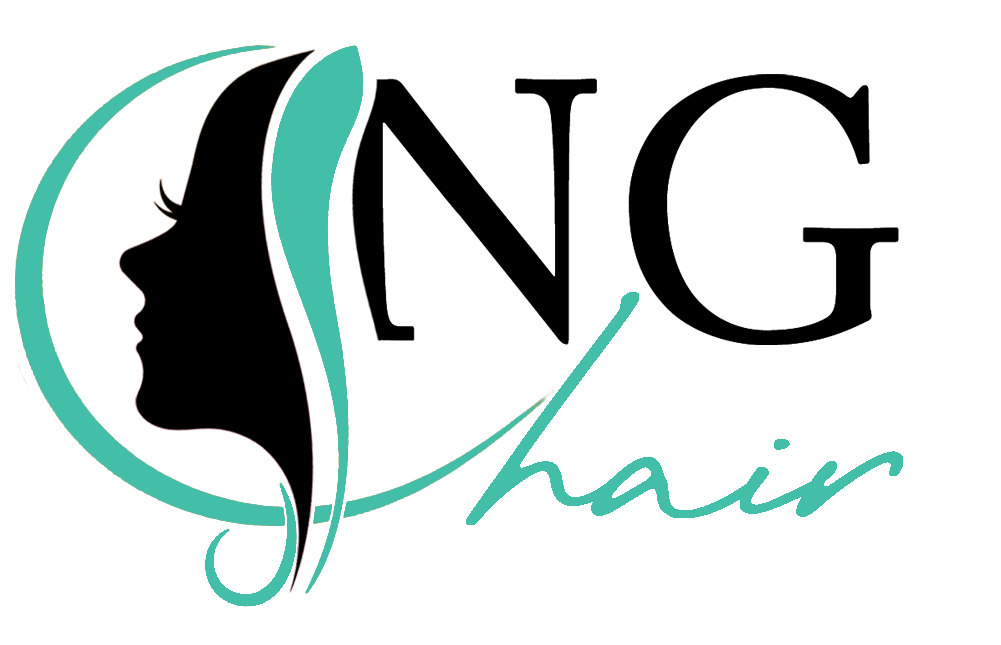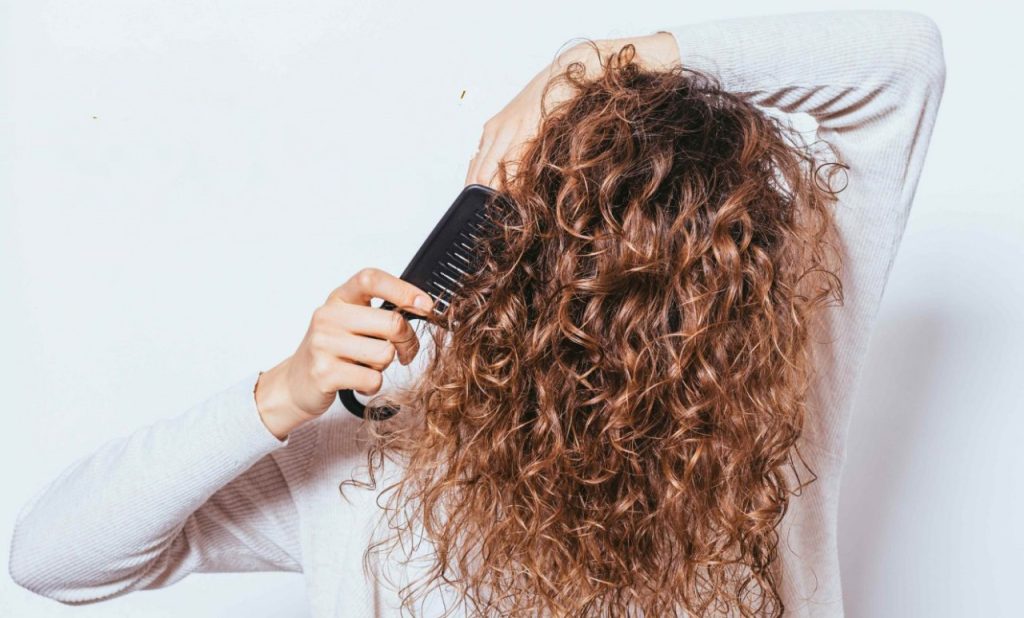No products in the cart.
Hot Products Blog
HOW TO DETANGLE & BRUSH & WASH CURLY HAIR CORRECTLY
A. DETANGLE CURLY HAIR
STEP 1: START WITH DAMP OR WET HAIR
First things first, detangling curly hair is easier when your hair is wet. If you’ve ever tried to force a brush through dry knots—something we don’t advise—then you already know this. So, before you start detangling, hop in the shower and use shampoo and conditioner just like you normally would. Remember, however, that your hair is at its most fragile when it’s wet, so you’ll want to be extra gentle during the detangling process. That’s where the next two steps come into play.
STEP 2: ADD LEAVE-IN CONDITIONER
After you’ve washed and conditioned your strands as usual, if you find that your curly hair is still especially tangled or difficult to comb through, spritz on a leave-in conditioner or detangling spray to help make the process more effortless. Focus on the mid-lengths to the ends of your hair.
STEP 3: GRAB A WIDE-TOOTH COMB
This isn’t a job for your brush—the best tool to use to detangle curly hair would have to be a wide-tooth comb. Pick up your comb and move on to the next step.
STEP 4: WORK FROM THE BOTTOM UP
Think about it: Where are your tangles? They’re probably toward the ends of your hair, right? So, starting from the top and combing downward will just make them bigger and more tangled. Instead, grab your wide tooth comb and gently glide it through your hair starting at the bottom. You’ll have to work in small sections and be patient—but we promise it will pay off! With each small section of hair, start combing very gently, working from the bottom upward. Repeat this until your entire head is tangle-free and combed through.
STEP 5: APPLY A HAIR SERUM
Once you’ve achieved tangle-free hair, you’ll want to apply a nourishing hair serum onto your smooth strands. Doing so will help keep your strands healthy and, in turn, keep your curls looking their very best—which includes remaining as tangle-free as possible. Apply a dime-sized amount of the L’Oréal Paris Elvive Extraordinary Oil Deep Nourishing Treatment Serum onto the lengths and ends of your hair, then comb through again (or use your fingers) to make sure that the product is evenly distributed.
B. HOW TO BRUSH CURLY HAIR
Having curly hair doesn’t mean you can never use a hair brush. After all, it likely won’t be every day that you’ll need to detangle your curls. Sometimes you’ll simply want to use a brush as a styling tool. For those days, make sure your hair is completely dry before breaking out your brush.
While combs are amazing tools for wet hair, using a brush on wet strands can result in breakage. As for the type of brush to use, if you have curly hair, skip plastic bristles. A natural bristle brush, on the other hand, will be perfect for your hair type. Once you have one in hand, start with a small section of hair and gently brush your ends, then work your way up slowly through your mid-lengths and finally up to your roots. Do this all over your head and there you have it—you’ve brushed your curly hair!
As you likely know, brushing out your curls can cause them to frizz and become unruly. When this happens, turn to a leave-in hair gel or oil to help tame even the wildest of spirals
C. WASH CURLY HAIR
Start With The Right Shampoo
One of the main challenges when caring for curly hair is maintaining moisture. Unfortunately, many shampoos, including those specifically marketed towards curly hair, are far too drying for your curls. When choosing a shampoo, take a look at the label and make sure that it does not contain SLS (sodium laureth sulfate or sodium lauryl sulfate). SLS acts as a detergent and lathering agent, and while it may be perfectly suitable for straight hair, it can wreak havoc on more delicate curly hair by stripping away far too much moisture and leaving your curls dry and damaged.
How Often To Wash
Knowing how often to wash curly hair can be challenging, as it is a very personal answer and is usually only found through trial and error. Begin by cutting down to one wash a week, and give your hair a few weeks to adjust to the new wash schedule. Your hair may feel a bit greasy initially, but that’s just because it has become used to overcompensating sebum production to keep up with frequent washes. If you find your hair has not adjusted after 4-6 weeks, you may need to wash more frequently. Alternatively, if your hair is not greasy or doesn’t feel dirty after a week, cut down your wash schedule to once every week and a half to two weeks. You should only wash your hair when it becomes dirty, or if you experience product or hard water buildup. Otherwise, washing your hair serves no purpose and unnecessarily dries out your curls.
Consider Co-Washing Instead
Many curlies opt to combine co-washing with their low- or no-poo washing routine. Co-washing simply means that you wash your hair using a CG-friendly, silicone-free conditioner instead of shampoo. Co-washing is generally done with a specially formulated co-washing shampoo, which contains very gentle cleansers instead of the much harsher detergents found in shampoos. Co-washing can be used in combination with a low-poo method by incorporating it in between shampoo washes to mitigate the drying effects of shampooing. Co-washing can also be used as its own standalone method for washing if your hair is particularly dry and prone to damage.
Prepare Your Hair With A Pre-Poo
To mitigate the drying effects of shampoo on their curly locks, many curlies opt for a pre-poo treatment. Your pre-poo product can either be a specifically formulated pre-poo product, or it can be a hydrating conditioner, hair mask, or oil. The important thing is to apply the pre-poo to clean, dry hair, and to allow it to seep into your hair for at least 20-30 minutes. To boost product absorption, plop your hair or cover with a plastic shower cap. This process allows your hair to absorb moisture before shampooing, and makes the process of washing curly hair much easier on your hair.
Rehydrate Your Hair With Every Wash
Each wash, whether you’re co-washing or shampooing, should be followed by a hydrating conditioner. Distribute the conditioner evenly through your hair, and allow it to sit for at least 5-10 minutes so that it can absorb into your hair. Use an upward squishing motion to encourage the conditioner to seep deep into each strand. Take this opportunity to gently detangle your curls, either with your fingers or with the aid of a wide-tooth comb. If you have very curly or particularly thick hair, detangle in small sections to avoid damage and breakage. Rinse out the conditioner with the same upward squishing motion, and finish off with cold water to snap the cuticle shut and seal in the moisture.
Dry Your Hair Correctly
Don’t let all the effort you put into washing your hair be undone by a towel! Keep towels away from your curls, and opt instead for drying with a cotton t-shirt or microfiber towel. Terrycloth towels are far too rough for curly hair, and absorb too much moisture too fast. Squish out excess moisture using an upward motion, and plop <link to plopping guide> your hair to gently absorb excess water after a wash.



 Products
Products
Related Posts: